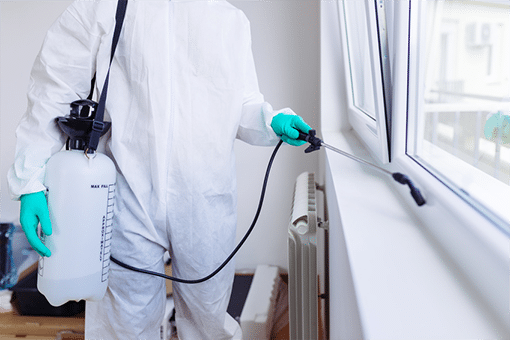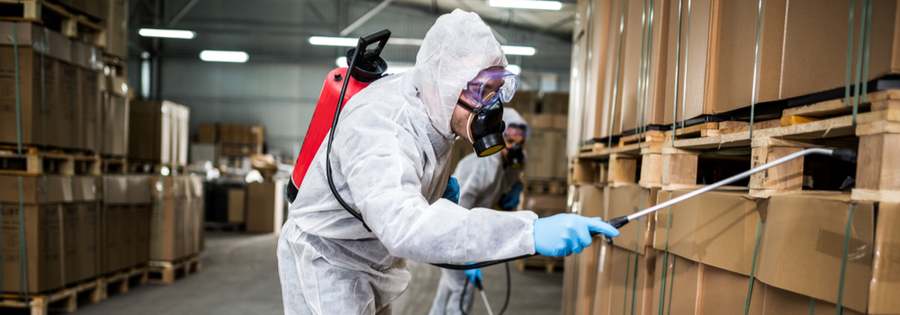Professional Pest Control Techniques for Long-Term Outcomes
In the world of bug control, accomplishing continual efficiency and long-term outcomes calls for a careful approach that goes beyond simple elimination. Expert pest control methods encapsulate a detailed approach that begins with a comprehensive inspection and evaluation, followed by precise pest identification to recognize their behavior patterns. The implementation of Integrated Pest Monitoring (IPM) concepts, coupled with eco-conscious treatments, creates the keystone of lasting insect obliteration. However, truth examination lies in the recurring surveillance and upkeep of the treated locations, making sure a pest-free environment for the near future. By delving into the ins and outs of these methods, a deeper understanding of professional parasite control techniques for withstanding end results arises.
Evaluation and Assessment
Upon getting in a residential property for insect control services, the initial action is an extensive evaluation and evaluation to recognize the extent of the problem and establish one of the most effective treatment strategy. Professional bug control specialists are trained to meticulously check out the facilities, trying to find indications of insect task such as droppings, nibble marks, nests, or any type of structural damage. They will likewise analyze the problems that may be bring in insects, such as food sources, water leaks, or entrance factors.

Pest Identification and Actions

In addition, understanding the habits of the identified bug is essential to executing efficient control steps. Understanding where insects nest, what they feed on, and their activity patterns can aid pest control professionals develop strategies to eradicate them successfully.
Integrated Parasite Administration (IPM)
Integrated Bug Management (IPM) strategies combine multiple strategies to control and protect against bug problems in a sustainable and eco-friendly way. pest control. By integrating approaches such as biological control, environment manipulation, modification of social techniques, and making use of resistant selections, IPM intends to reduce making use of chemical pesticides
One of the crucial principles of IPM is the emphasis on prevention. This aggressive technique involves monitoring bug populaces regularly to find any type of prospective issues prior to they rise. By recognizing insect troubles beforehand, pest control procedures can be carried out swiftly and properly.
Moreover, IPM promotes the use of safe parasite control techniques whenever feasible. This can include using all-natural predators of the parasites, introducing valuable bugs, or making use of pheromones to interfere with breeding patterns. By minimizing dependence on chemical pesticides, IPM not just shields go to my blog the atmosphere yet additionally assists keep a balance in the community.
Environmentally-Friendly Treatments
Applying eco-conscious methods in parasite control procedures can properly attend to invasions while focusing on environmental sustainability. Environmentally-friendly therapies concentrate on reducing the influence of insect control techniques anchor on ecological communities, non-target microorganisms, and human health and wellness. These methods frequently involve using natural killers, such as ladybugs or nematodes, to manage pest populaces, minimizing the demand for chemical interventions. Furthermore, strategies like environment control, such as adjusting moisture degrees or eliminating food sources, can aid hinder parasites without making use of hazardous compounds.
One more secret element of environmentally-friendly therapies is making use of organic and naturally degradable products that damage down promptly without leaving hazardous residues in the environment. Agricultural insecticides stemmed from plants like chrysanthemums or neem use efficient parasite control while presenting very little risk to non-target types. Employing techniques like heat treatments or pheromone catches can target details insects with precision, decreasing the general ecological effect of parasite control methods.
Recurring Tracking and Maintenance
Continual surveillance and upkeep are crucial components of reliable pest control administration. Recurring tracking plays a critical duty in guaranteeing that insect problems are discovered very early and dealt with promptly. Routine inspections by qualified professionals are required to recognize any type of indications of bug activity, examine the efficiency of previous therapies, and make modifications to the pest control plan as required. By keeping track of insect populaces gradually, insect control specialists can track patterns, expect possible problems, and apply precautionary steps to lessen the threat of future infestations.
Along with surveillance, maintenance practices are vital for long-lasting insect control success. This includes implementing correct sanitation actions to get rid of prospective food and water resources for pests, securing off access factors to protect against insects from getting in the facilities, and dealing with any type of structural problems that could facilitate weblink parasite infestations (pest control). By integrating continuous monitoring and maintenance right into an integrated pest monitoring approach, organizations can guarantee a pest-free atmosphere and guard their property versus costly damage and health risks
Verdict
Finally, using professional pest control techniques such as thorough examination and analysis, accurate insect recognition and understanding of their actions, integrated parasite management strategies, environmentally-friendly therapies, and ongoing surveillance and maintenance are necessary for accomplishing long-term cause parasite control. By executing these methods, people can successfully handle pest problems and maintain a pest-free environment in a lasting way.